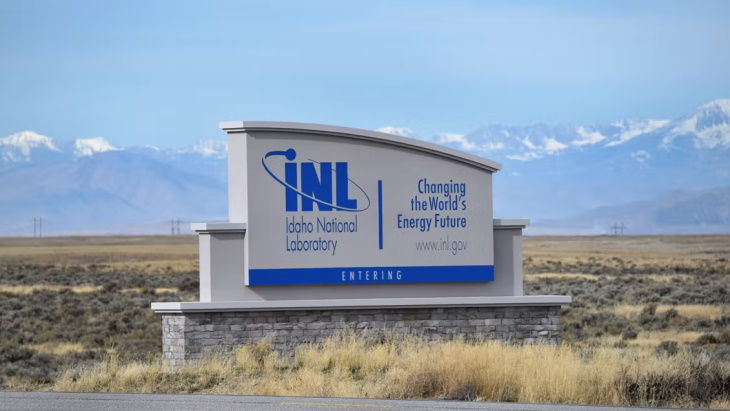The US Department of Defense Strategic Capabilities Office (SCO) has announced it will proceed with the project to build and demonstrate a TRISO-fuelled prototype mobile microreactor at the Idaho National Laboratory (INL) site. It will be the USA's first electricity-generating Generation IV reactor.

The prototype will be constructed at INL (Image: INL)
The SCO's newly released Record of Decision (ROD) follows the release of a final environmental impact statement (EIS) for the reactor, which was published in February after a public comment period.
The microreactor will be an "inherently safe" design capable of being transported by the Department of Defense (DOD) and able to deliver 1-5 MWe for a minimum of three years of full power operation. It will be the first electricity-generating Generation IV nuclear reactor built in the USA, DOD said.
"Advanced nuclear power has the potential to be a strategic game-changer for the United States, both for the DOD and for the commercial sector," Jeff Waksman, Project Pele programme manager, said. "For it to be adopted, it must first be successfully demonstrated under real world operating conditions."
Project Pele in March 2020 issued a Notice of Intent to conduct an environmental analysis in accordance with the National Environmental Policy Act, simultaneously launching a two-year design competition for the microreactor. BWXT Advanced Technologies and X-energy LLC were subsequently selected to develop a final design for a prototype mobile high-temperature gas reactor using high-assay low-enriched uranium (HALEU) tristructural isotropic (TRISO) fuel under the Project Pele initiative. The fuel for the reactor will be produced at BWXT's facilities using material from the Department of Energy's (DOE's) highly enriched uranium inventory.
"SCO has full confidence that both teams have developed reactor designs which can be constructed to meet SCO's minimum technical requirements. However, only one design will be selected and announced later this spring," DOD said.
The DOD currently uses some 30 TWh of electricity per year and more than 10 million gallons of fuel per day, and the expected electrification of the non-tactical vehicle fleet and maturation of future energy-intensive capabilities mean these requirements are likely to grow. A safe, small, transportable nuclear reactor would address this growing demand with a resilient, carbon-free energy source that would not add to its fuel needs, while supporting mission-critical operations in remote and austere environments, it said.
Project Pele is described as a whole-of-government effort, drawing on the expertise of the DOE, the Nuclear Regulatory Commission, US Army Corps of Engineers, NASA and the National Nuclear Security Administration. The reactor is to be a single prototype, which will be demonstrated only within the USA under DOE oversight. DOD will decide whether or not to transition the technology and to use it operationally at a future date, but the reactor could also serve as a "pathfinder" for commercial adoption of such technologies, DOD said.
"The DOD has a long history of driving American innovation, with nuclear power being one of many prominent examples," SCO Director Jay Dryer said. "Project Pele is an exciting opportunity to advance energy resilience and reduce carbon emissions while also helping to shape safety and non-proliferation standards for advanced reactors around the world."
In a seperate project, the US Air Force in 2021 announced plans to build its first microreactor would be at Eielson air force base in Fairbanks, Alaska, to be operational in 2027.
Researched and written by World Nuclear News